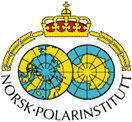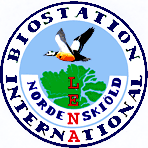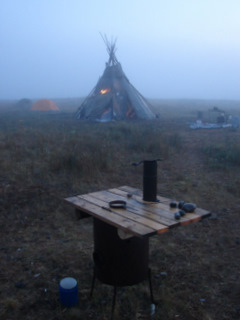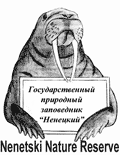Who and When
In 2009 in Nenetsky Nature Reserve expedition it was two participants: Pokrovsky Ivan, PhD-student from the Arctic Predators project and Kulikova Olga, master student from Moscow State University. Expedition started on 23 of June 2009 and finished on 21 August 2009.
What
During first phase we provided snap trapping session on the grids, faeces counting, experiment with eggs, and started to prepare tunnels. After that, we checked dens of arctic and red foxes.
On the second phase we searched for nests of raptors and set tunnels on the grids. We visited nests regularly, for measuring chicks and for collecting pellets and samples of down and blood and also we provided several sessions of photo observing of the nests.
On the third phase we provided second session of snap trapping and faeces counting on the grids, visited dens (with collecting faeces) and collected plants for SIA.
Small rodents
This year was a crash year for small rodents. We caught three small rodents during first session and 33 during the second session. Compare to previous years it was similar with 2007 and less than in 2008. As in the previous years rodents were mostly root voles and practically all of them were caught in willow thicket.
Raptors
During regular excursions we observed area ~ 100 sq.km. We found 14 nests of Rough-legged Buzzard, five nests of Peregrine Falcon, and two nests of Parasitic Jaeger. For three nests of Rough-legged Buzzard we provided several sessions of photo-observing with automatic cameras.
Arctic and Red fox
We visited all dens, which were known from previous years and registered three active dens of arctic fox and one den of red fox, which were located in the former den of arctic fox. We collected all faeces from the dens at the start and at the end of the season for following analysis.
Press of predators (experiment with hen eggs)
As in the previous years we set hen eggs to our grids (for two eggs per each of 36 grids). On the open grids they disappeared faster, than in willow thicket; on the units with more fragmentized willow thicket eggs also disappeared faster, then on others.
Mustelid tunnels
We registered only one mustelid (weasel), which after was caught casually by snap trap. On the same moment we regularly registered activity of small rodents in the tunnels.
Herbivorous
We provided two sessions of faeces counting on the grids and found that density of ptarmigans and hares didn’t change relatively to the previous year and it’s still on rather high level.
This year was successively for raptors and arctic foxes in spite of low density of small rodents. There were practically no mustelids and high density of herbivorous as in previous years. Mosquitoes appeared only on the middle of July and disappeared in the first decade of August. It was cold June and start of July, but rest of July and August were normally for this site. |

![]()







